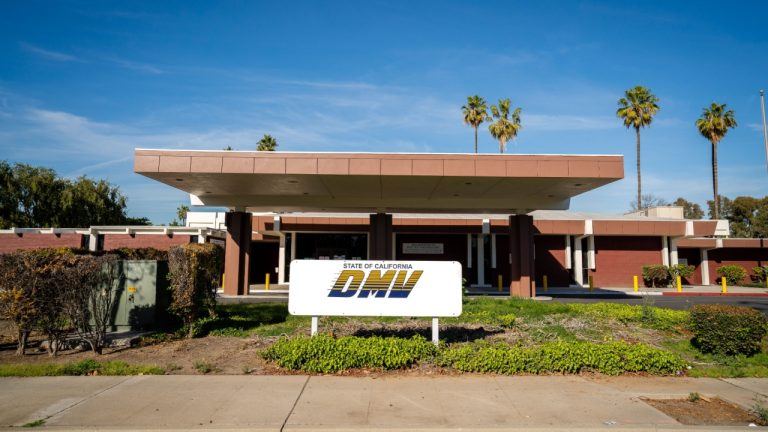Tether Reports Record $5.2 Billion Profit Amid USDT Growth
Tether, a leading stablecoin issuer, has reported record-breaking profits and substantial growth in market capitalization, reflecting the increasing demand and stability of USDT. Meanwhile, Project Pyxtrial, a collaboration between the Bank for International Settlements (BIS) and the Bank of England (BoE), has introduced a pioneering tool for the real-time supervision of stablecoins, aiming to enhance regulatory oversight and market confidence. Additionally, stablecoins have continued their steady ascent, with market dominance rising and notable increases in market capitalization.
Tether Reports Record $5.2 Billion Net Profits in H1 2024, USDT Market Cap Reaches All-Time Highs
Tether, the prominent stablecoin issuer, announced on Wednesday that it achieved a record-breaking $5.2 billion in net profits for the first half of 2024. This impressive feat comes as the market capitalization of its flagship cryptocurrency, USDT, soared to unprecedented levels, reinforcing its pivotal role in the global cryptocurrency market.
Tether reported a substantial $1.3 billion in net operating profits for the second quarter of the year. A portion of these profits has been strategically reinvested into various projects aimed at enhancing the company's infrastructure and expanding its market presence. The reinvestment into ”strategic projects” demonstrates Tether's commitment to innovation and sustained growth.
The company's latest quarterly attestation, signed by accounting firm BDO Italy, revealed that Tether International Limited and Tether Limited collectively hold $118.4 billion in assets against $113.1 billion in liabilities as of June 30. This translates to a robust $5.3 billion in excess reserves, providing solid backing for Tether's stablecoins and reinforcing the company's financial stability.
Tether's significant holdings in U.S. debt, amounting to $97.6 billion, has put the company in a strong position in the financial markets. These holdings would rank Tether as the 18th largest holder of U.S. debt globally, surpassing countries such as Germany, the United Arab Emirates, and Australia.
Tether Investments, a separate division from the stablecoin business, has been instrumental in managing the company's diverse investment portfolio. This entity boasts a $6.2 billion net equity value, demonstrating Tether's growing foray into various sectors including Bitcoin (BTC) mining and artificial intelligence.
USDT remains a cornerstone of the crypto market, serving as a vital tool for trading and providing access to U.S. dollars, particularly in developing countries. With a market value of $114 billion, up from $91 billion earlier this year according to CoinGecko, USDT's popularity continues to surge. Its pivotal role in facilitating liquidity and stability in the volatile crypto market has cemented its position as the most popular stablecoin globally.
Addressing Scrutiny and Ensuring Transparency
Over the years, Tether has faced considerable scrutiny regarding the transparency of its reserves. Addressing these concerns, Howard Lutnick, Chairman and CEO of Cantor Fitzgerald, a Wall Street investment bank that manages a portion of Tether's assets, affirmed that Tether indeed has the necessary reserves to back its stablecoins.
BIS and BoE Unveil Groundbreaking Supervision Tool for Stablecoins with Project Pyxtrial
In related news, the Bank for International Settlements (BIS) and the Bank of England (BoE) have made significant strides in the supervision of asset-referenced stablecoins. On Wednesday, they announced the successful development of a prototype data analytics pipeline through Project Pyxtrial, a pioneering effort to enhance the oversight of stablecoins' balance sheets.
Project Pyxtrial has produced a cutting-edge data analytics pipeline capable of providing supervisors with near real-time insights into stablecoins' liabilities and the assets backing them. This technological advancement marks a critical step towards a tool that could enable supervisors and regulators to proactively detect issues in stablecoin backing, ultimately aiding the development of comprehensive policy frameworks based on integrated data.
Stablecoins, which are digital coins pegged to other assets such as fiat currencies, have seen rapid growth and currently represent a market capitalization of $163.7 billion. Despite their increasing popularity, the sector remains largely unregulated and lacks sophisticated supervisory technology. The creation of Project Pyxtrial addresses this regulatory gap and aims to bolster the stability and transparency of stablecoin operations.
The BIS and BoE report highlighted the potential risks associated with stablecoins, particularly the possibility of a mismatch between a stablecoin issuer's liabilities (coins in circulation) and the assets backing them. Such discrepancies could undermine confidence in the issuer's ability to redeem stablecoins at par value, potentially triggering a ”run” where holders rush to redeem their stablecoins, leading to a sudden loss of value.
Central banks have long stressed the vulnerabilities of stablecoins to such runs. Two years ago, the U.S. Federal Reserve warned that stablecoins backed by national currencies could face significant risks if their value were to suddenly drop. The lack of transparency regarding the riskiness and liquidity of assets backing stablecoins exacerbates these vulnerabilities, making robust supervisory tools like those developed in Project Pyxtrial essential.
Enhancing Global Regulatory Frameworks
The Financial Stability Board (FSB) is currently examining global requirements that could apply to stablecoins, aiming to mitigate risks and enhance the resilience of the financial system. Project Pyxtrial's innovative technology aligns with these efforts by providing a framework for real-time monitoring and supervision of stablecoins, thereby supporting the development of global regulatory standards.
The BIS also noted that Project Pyxtrial's data analytics capabilities could extend beyond stablecoins to monitor tokenized products backed by real-world assets. This potential broadens the scope of Pyxtrial's impact, offering a versatile tool for overseeing a range of digital assets and ensuring their stability and reliability.
The successful development of Project Pyxtrial brings attention to the critical role of technology in enhancing financial supervision and regulation. By providing near real-time data and advanced analytics, Pyxtrial empowers supervisors and regulators to detect and address issues proactively, fostering greater transparency and stability in the digital asset sector.
As stablecoins continue to grow in popularity and usage, the insights and tools provided by Project Pyxtrial will be invaluable in maintaining their stability and preventing disruptions in the broader financial system. The collaboration between the BIS and BoE sets a precedent for other regulatory bodies to adopt similar technological innovations, ensuring a secure and resilient future for digital finance.
Stablecoins Surge in 2024: Market Dominance Rises as New Trends Emerge
As 2024 continues to unfold, the cryptocurrency space is witnessing unprecedented developments such as the launch of spot Bitcoin and Ethereum ETFs. Amid these innovations, another significant trend has emerged: the sustained growth of stablecoins. Over the past ten months, stablecoins have not only maintained their growth trajectory but have also increased their market dominance to 6.93%.
According to a report from CCData, the total stablecoin market capitalization rose by 2.11% in July, reaching $164 billion. This increase marks the continuation of a ten-month ascent for major stablecoins.
Tether (USDT), the largest stablecoin by market cap, experienced a 1.61% growth, bringing its total market capitalization to an all-time high of $116 billion. This marked the eleventh consecutive monthly increase for USDT, which now holds a market dominance of 69.6%.
Other notable stablecoins, including USD Coin (USDC), BlackRock’s BUIDL, and PayPal USD (PYUSD), also saw market cap increases. PayPal USD was the largest gainer among the top ten stablecoins, rising 17.9% to $589 million, setting a new all-time high. In contrast, stablecoins like First Digital USD (FDUSD) and Ethena USDe saw their market capitalizations decline.
Despite the growth in market capitalization, stablecoin trading volumes fell by 8.35% in July to $795 billion. This decline was attributed to struggling activity on centralized exchanges. However, overall trading volumes are expected to trend higher, driven by the launch of spot Ethereum ETFs and the bullish sentiment expressed at the recent Bitcoin 2024 Conference.
The recent Markets in Crypto-Assets (MiCA) regulations in Europe have also impacted trading activity. These regulations require stablecoin issuers to secure e-money licenses and maintain significant reserves, thereby enhancing market security. Major stablecoins like Circle's USDC and EURC have already complied with these requirements. As a result, USDC continues to dominate trading activity on centralized exchanges, benefiting from its MiCA compliance.
USD Coin (USDC): A Rising Star
One of the most significant findings in the CCData report is the surge in the market cap and trading volumes of USDC, the second-largest stablecoin by market capitalization. USDC now accounts for 73.5% of the market share among the top ten stablecoins.
Trading volumes on USDC pairs on centralized exchanges rose by 48.1% to $135 billion. This increase is largely attributed to USDC's compliance with the MiCA regulations, which took effect in Europe late last month.
A deep-dive analysis by crypto firm Bankless, published on July 31, highlighted USDC's dominance within the Solana ecosystem. According to Bankless, USDC accounts for approximately 70% of Solana's total stablecoin supply. The trading volume of USDC on Solana has surpassed USDT by a ratio of 19:1, even outpacing the combined volume of the top 20 ERC tokens.
Bankless attributes USDC's dominance on Solana to strategic initiatives by Circle and the Solana Foundation, which have incentivized developers and promoted trading platform integration. Developer grants from platforms like Solend Protocol and Superteam, provided in USDC, have attracted more developers to the Solana blockchain. Additionally, Circle's Cross Chain Transfer Protocol (CCTP) and Web3 Services aim to unify DeFi and establish USDC as the leading stablecoin on Solana.





